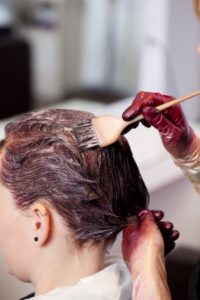Does My Mom Have a Hair Dye Allergy?
Doc,
My mom has been dyeing her grey hair for many years. Recently she went to the salon for her usual touch-up and she developed a rash along her hair line. The next time she went, the rash got worse. Has she developed a hair dye allergy?
K.

Hi K.,
You are correct! It seems as if your mother has developed an allergy to her hair dye. The most likely culprit is Paraphenyldiamine aka PPD. It is the most reliable hair dye ingredient that makes the hair dark brown or black. However, it is widely known to be a sensitiser, i.e. it triggers the body to remember it so that each time it comes into contact with it a reaction occurs. There are instances of persons who used henna mixtures for mehandi (black henna tattoo) only once who later on developed rashes when they started to dye their hair. The henna used for mehandi usually contains very high amounts of PPD.
The problem is that there are very little substitutes out there that do the job as well. There are many natural hair dyes however, they tend to be messier and/or take longer for the dye to set. The most famous of which is natural henna. Ensure that the henna that you purchase is not a henna/chemical dye mash up. Henna dyes the hair red-brown. To get a deep black colour, indigo is usually added.
There are other chemical dyes that use similar ingredients to PPD that do not have the same sensitising profile as PPD. Interestingly, with the advent of the active protein based cosmeceuticals, there are products containing melitane (a protein) that helps the hair follicle to naturally restore its pigment production. Hopefully, we will see more of this on the market soon.
What do if you have a hair dye allergy?
Once the rash develops, you will need to get an antihistamine such as Chlorpheniramine e.g. Benadryl to help with the itching. A Cortisone (steroid) cream will help to minimise the symptoms pretty quickly. If you continue to use PPD containing dyes the rash or reaction will continue to worsen and can take up the entire body. Please read below what happened to NCIS star who had a PPD allergy: http://ow.ly/gOyq307n1rg
It is best that anyone who suspects he/she has a dye allergy should go to a dermatologist or allergist to do what is called a patch test. This involves the placement of small amounts of known allergens on her back and doing readings after day 3 and day 5 to see which one she has developed a reaction to. This will help her determine the exact cause of her rash and then she can avoid products containing that particular ingredient(s).